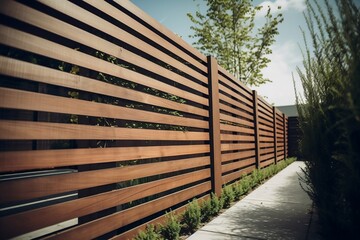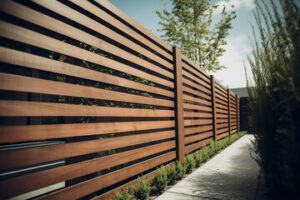There are many different types of TV Mounting. Each has its own purpose. Read the instructions that come with your mount and choose one that matches your television.

First, locate the wall studs where you plan to mount your TV. A stud finder can help. Studs are typically 16 inches apart.
Mounting a flat TV to the wall saves floor space and lifts the screen up to where everyone can see it. Most flat-screen TVs come with a mounting kit that includes all the hardware you need to hang your television. Most mounting kits are designed to be used with drywall, but you may need extra hardware if you have brick or other types of masonry walls.
Before starting to mount your TV, make sure that the mount is rated for the weight of your television and its screen size. Most manufacturers sell mounts that are specifically rated for their televisions, but universal mounts that can accommodate most sizes of flat screens also exist. If you have a very heavy television, you should consider purchasing a mount made of metal instead of wood or plastic.
The first step in mounting your TV is to locate the mounting plate attachment holes on the back of the TV. These holes are often covered with plastic and can be a bit tricky to find. Once you have found them, mark the locations on your wall with a pencil and drill holes where the marks are. You will likely want to have a friend help you hold the mount up to the wall and use a level to make sure that it is straight.
Next, determine the height at which you want to mount your TV. For safety reasons, it is a good idea to mount the TV so that you can still easily reach the controls on the television, even if you are lying down or sitting up in bed.
Once you have determined the correct mounting height, remove the mount from the box and have a friend help you hold it up against the wall. Using a level, mark the positions of the holes for the lag screws that will be used to fasten the mount to the wall.
Once the holes have been marked, drill them using a masonry bit. When the holes are drilled, use a screwdriver to remove any plastic that may have been covering them. Drill a hole 1/8 inch smaller than the lag screw that came with the mounting kit, then use a socket wrench to attach the lag screw and washer to the wall.
Tilt/Swivel Mount
For those who want a little more versatility when it comes to mounting their TV, a tilt/swivel mount can be the perfect solution. Unlike the flat mount that simply attaches to the wall, these brackets allow you to move your TV from side to side as well as up and down. This means that you can optimise the viewing angle for a particular room, or to reduce glare from sunlight.
Tilting the TV can be particularly useful for LED and LCD TVs which often lose contrast and clarity when viewed from an angle above a certain point. Using a tilt mount can help to prevent this issue, and can also be helpful in situations where you need to tilt the TV upwards in order to avoid light reflecting off of ceilings or other surfaces.
A swivel mount also allows you to move your TV laterally left to right, which can be useful if you have more than one person watching it. It can also be used to reduce glare from sunlight that might be coming in through a window or other glass surface, which can be distracting for some viewers.
Another type of movable TV mount is the articulating mount. This type of bracket can be described by a range of different names, including pan and swivel mounts. It can offer movement from all directions, although it is often only capable of moving the TV up and down.
Choosing the correct mount type can be difficult, and it is important to consider how your TV will be positioned in your home before making a purchase. You should also always check that the mount you are purchasing is compatible with your TV, which can be done by referring to the technical drawing page of the TV’s owner’s manual or by using a stud finder to determine if the wall you would like to install it on has suitable wall studs for the bracket to be fixed into. Almost all TV wall mounts available for sale comply with the VESA format, so it should be relatively easy to find one that is compatible with your television.
Wall Mount
Most TV mounts are designed with two parts: the plate that attaches to the wall and the arm or bracket that attaches to the back of the television. Some have a horizontal mounting frame and some have an arm that goes vertically. Once you’ve chosen the type of mount that fits your television, you can start thinking about where you want to put it. The best location for a TV is above a fireplace or in the middle of an entertainment area. The next best locations are either in front of a window or in an alcove. It’s best to avoid placing a TV in the corner of a room because it can make the space feel closed off and smaller.
Once you’ve picked out a location, you should mark the studs on the wall using a stud finder or by tapping the wall with your fingers. A stud finder is the easiest to use, and it will show you a line on the wall where there is a stud. Studs are typically 16 inches apart, and they should be centered in the wall.
Many wall mount kits include a variety of screws and bolts for attaching the plate to the wall and locking it in place. Some of the better brands may also send you additional screw sizes for things like concrete walls, and they’ll probably be able to tell you what you need over the phone or through their help desk.
Before you drill into the wall, find out what your TV’s weight is and make sure that the screws on the mount can support it. Also, if you’re going to install a tilting or swiveling mount, check that the screws attached to the mount can move freely and won’t impede those movements.
Finally, if you’re going to install an articulating mount, check that the screws that attach the bracket to the TV can move freely as well. Once you have all the right screws, have a friend hold the TV and use a level to make sure that it’s perfectly straight up.
TV Stand
A TV stand, which is also known as a media console or TV table, provides storage and display space for your electronics. It can also serve as a base for decorative items, such as vases, plants, and photo frames. You can find a wide variety of stands in different sizes, materials and styles. Some feature adjustable partitions to customize the amount of storage space available. Whether you prefer a modern or traditional style, there is a TV stand to suit your tastes.
When shopping for a stand, remember to measure the dimensions of your television screen to determine what size is right for you. Don’t forget to take into account the width of the bezel when making your measurement. A good rule of thumb is to choose a stand that is wider than your TV, which helps prevent the piece from tipping.
A good TV stand should have cutouts on the back or bottom for cord management. This allows you to route wires through the piece of furniture, keeping them out of sight and neatly organized. Some of the larger ones also provide a dedicated space for your cable box, Blu-ray player and other audio/visual equipment, providing stable and safe storage.
Choosing a wood-based stand is a good option, as it’s durable and adds warmth to a room. Some are finished with a veneer or laminate that gives the surface a smooth and appealing texture. Others are crafted from solid materials, such as mango wood, engineered wood and teak. Some even have a distressed finish, giving them an antique look.
Depending on the size of your living room, you may want a TV stand that has an open design to create more visual space. However, keep in mind that this can lead to more dust accumulation and may require routine cleaning. On the other hand, a closed-door stand may be easier to clean and can protect your electronics from dust. Moreover, you can get one that has doors and cabinets to store other items, such as throw blankets and toys.


